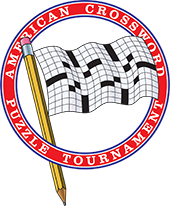Two words, nine letters: Solves all puzzles
Source: The OregonianDate: April 9, 2001
Byline: Noelle Crombie
Two words, nine letters: Solves all puzzles
Matt Jones' dad says the trophy winner just functions on a different level than most of the workaday worldAdjusting his tortoiseshell-rimmed glasses and gripping a worn-down pencil, Matt Jones moved through the crossword puzzle with a surgeon's precision, closing in on the empty squares in the bottom-right corner. ["For the record, the Saturday puzzle I solved was a recent NYT March 2001 puzzle by Mark Diehl," Matt Jones adds -Webmaster].
A dog star.
"A-S-T-A! 'The Thin Man.' That's pretty cool!"
Pasture item.
"C-O-W-P-A-T-T-Y? I can't believe that!"
Bad thing to give away.
"E-N-D-I-N-G!"
Jones, a graduate of Clackamas Community College and Rex Putnam High School in Milwaukie, finished The New York Times crossword puzzle in less time than it takes to polish off a cup of coffee. In eight minutes and 17 seconds, he solved the newspaper's most vexing puzzle of the week.
At 25, Jones is a master puzzler. He recently returned from the prestigious American Crossword Puzzle Tournament, where he won three trophies, including 10th place overall and second place for puzzlers 25 and younger.
He keeps a mental collection of potential crossword puzzle answers, a mix of seemingly useless and wacky trivia he taps every time he sits down to match wits with a puzzle.
Practice helps, too. Puzzlers know, for instance, that the Times crossword puzzles become more difficult as the week progresses. Monday's puzzle is a cinch (Jones usually completes it in less than four minutes), compared with Saturday's, which puzzlers consider notoriously difficult.
After enough puzzles, patterns begin to emerge.
"If you think about it, there are a lot of four-letter words that start with vowels that keep popping up," Jones said. "You have 'area,' 'Oreo,' 'Elia.' "
Elia?
"That was the pen name for Charles Lamb," he said. "Those are the types of things you pick up after a while."
Jones' knack for puzzles is a mystery to his non-puzzler parents, Sue and Linn Jones of Oak Lodge. By age 4, their son could finish the Jumble in the daily newspaper faster than they could. By 10, he was toting puzzles wherever he went. His parents replenished his puzzle supply regularly.
His parents recall a boy so preoccupied by puzzle-solving that he wore a timer on his wrist to clock how long it would take to solve a crossword. When they interrupted him with a question, he'd stop the timer to answer.
"He is one of these guys who could send a pingpong ball to the moon with a rubber band given enough time," said Linn Jones, a retired Oak Lodge fire marshal. "He works on a whole different plane than you and I do.
"That means, I don't understand a lot of what he does."
Linn Jones said his son keeps almost every puzzle he's solved -- each marked with the time it took to complete it.
One room in the home Jones shares with his girlfriend, Jennifer Kuenzel, (also a non-puzzler) is dedicated to solving and creating puzzles. A bookshelf contains his lifelines -- dictionaries and a thesaurus, encyclopedias of television programs, sports, mythology, the complete works of Shakespeare, geography and biography reference books and a must-have for all puzzlers: "The New York Times Crossword Answer Book." Jones has contributed 40 words to the book.
He also has a prized dictionary: the circa-1950 Webster's New International Dictionary, Second Edition. The 3,214-page book, which he bought from a Times crossword puzzle editor, Will Shortz, sits on a shelf in his living room.
In other words, Jones is tough to stump.
"It's got to be a really, really tough puzzle," he said.
In fact, he has to think back two years to remember the last time he was at a loss for an answer.
"The clue happened to be 'Har -- ,' which was some kind of tennis court surface that I have never heard of," he said.
Save one for the bus
A graduate of Willamette University, where he studied music, Jones works as a contract technician for an insurance company. He keeps a puzzle handy for his daily bus ride from his home in Portland's Alameda neighborhood and for lunch.
In his spare time, he creates puzzles for publications. His puzzles have appeared in Stagebill magazines, which are handed out to theater-goers across the country. He's had puzzles published in the New York Times in 1994, 1996 and 1997. Each puzzle nets between $20 and $200.
The key to creating a good puzzle, Jones said, is to be tough but fun. Use pop culture references. Pick a quirky theme -- like movies that wouldn't make good double-features, for instance.
"Say, 'Driving Miss Daisy' and 'Nuts,'" [acknowledgments to Merl Reagle for the concept -webmaster] he said, thinking back to one of the more clever puzzles he's solved. "Something that makes you laugh and think makes a good crossword puzzle."
On his Palm Pilot, he keeps a list of words he'd like to incorporate in a crossword puzzle -- words such as Nipsey (as in Russell) and Don Quixote.
In the early 1980s, the crossword universe underwent a shift from what Jones calls "old school" answers to more modern word choices. That change should encourage more people to pick up their daily crossword puzzle and give it a try.
Many people are wary of attempting crosswords because they are "so used to that whole arcane language that used to be in puzzles -- three-toed sloths and German rivers that not everyone has ever heard of and Ecuadorean coins of the 18th century," he said.
"That used to plague puzzles," he said. "These days they try to stay away from that as much as possible. It's really more friendly to regular puzzle-solvers and people in general rather than just the cognoscenti."

